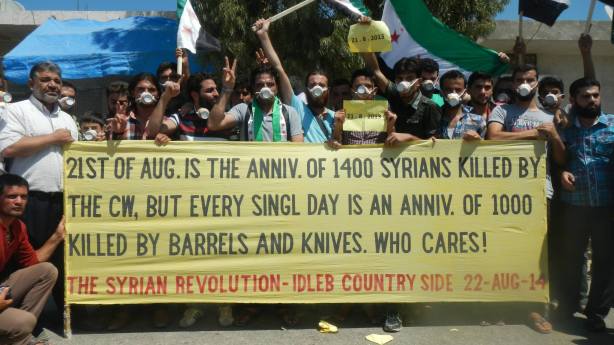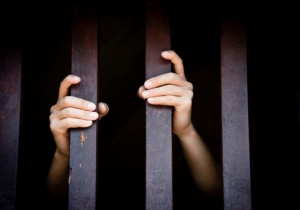A call by a senior UAE official on Monday for formal recognition of Al-Ahwaz as an occupied Arab country has sparked a rapidly growing pan-Arab media campaign, with over 1,000 prominent Arab figures across the region so far announcing their support of ‘I recognise Al-Ahwaz as an Arab State’. Despite only being launched a couple of days ago, the campaign is also spreading beyond the Arab world, with the slogan already shared across social media in 16 languages.
Launched in the wake of a statement issued by the influential former Dubai police chief Dahi Khalfan calling on Gulf states to open embassies for Al-Ahwaz and to formally recognise the state, which was renamed ‘Khuzestan province’ in 1936 by Iran following its 1925 annexation, the campaign has continued to gain popularity, winning backing from a wide range of influential Arab figures from all backgrounds across the region.
Among the leading regional figures who have announced their support of the new campaign are Jerry Maher, the founder and director of ‘Radio Swat Beirut International’ and the distinguished and widely respected Kuwaiti academic and analyst Dr. Abdullah Nafisi. In Egypt, TV show host Hussein Jouli, a moderate and opponent of the Sisi regime, said that he would head an Egyptian campaign for the recognition of Ahwaz as an Arab state. Another leading Kuwaiti figure voicing her support for the campaign was Ayesha Rashid, a liberal writer, journalist and political researcher.
Ahwazi activists hope that the new campaign, which has already been featured on media as diverse as Al Jazeera, CNBC Arabic, Sawa Middle East and even Japanese and Korean news channels, will help to raise awareness of the systemic injustices inflicted on the Ahwazi people by Iran for almost a century in near-complete international silence.
 Since the initial Iranian occupation in 1925, successive administrations in Tehran, both under the current theocratic regime and the previous rulers, have refused to recognise the most basic rights of the ethnically Arab Ahwazi people numbering around 10 million in total, who are denied not only the right to the same healthcare and education as Persian Iranians, but even the right to wear traditional Arab garments, or to publicly speak or learn their native Arabic language, being subjected to what is effectively an apartheid system of rule.
Since the initial Iranian occupation in 1925, successive administrations in Tehran, both under the current theocratic regime and the previous rulers, have refused to recognise the most basic rights of the ethnically Arab Ahwazi people numbering around 10 million in total, who are denied not only the right to the same healthcare and education as Persian Iranians, but even the right to wear traditional Arab garments, or to publicly speak or learn their native Arabic language, being subjected to what is effectively an apartheid system of rule.
Despite occupied Ahwaz, now a region of south and southeast Iran, being the home to around 95% of Iran’s oil and gas reserves, the vast majority of the Ahwazi population live in medieval poverty and squalor, often without running water, electricity or the most basic sanitation, while the massive wealth from their natural resources is spent on other, non-Arab regions by Tehran. This openly racist policy means that despite being the most resource-rich region of Iran, Ahwaz – or Khuzestan as Iran insists on calling it – is home to one of the poorest populations per capita on earth.
Anti-Arab racism is endemic in Iran, having been encouraged by successive regimes, with Ahwazis bearing the brunt of this bigotry, both in formal policies which treat them as second-class citizens, excluded from property ownership and all but the most menial jobs, and denied the most basic rights, as well as through a culture which glorifies racism and casual violence towards Arabs: many of the most celebrated contemporary Iranian poets’ most famous poems are filled with virulently racist anti-Arab imagery and language. This anti-Arab racism extends to all cultural forms, with one fairly typical recent hit by a popular Iranian singer entitled ‘Kill An Arab’ issued shortly after a phone app game, ‘Beat An Arab’ in which the object of the game is to force-feed a grotesque caricature of an Arab before beating him unconscious: both the song and he game were approved for general release by the Iranian Culture Ministry, which routinely approves such offensive items, and neither is viewed by Persian Iranians as being in any way objectionable.
 Ironically while the theocracy in Tehran is keen to present itself as the champion of Palestinians and arch-foe of Zionist occupation, its own savagely imposed occupation of Ahwazi Arabs’ land is arguably more brutal and its profound anti-Arab bigotry virtually indistinguishable to that of Zionists.
Ironically while the theocracy in Tehran is keen to present itself as the champion of Palestinians and arch-foe of Zionist occupation, its own savagely imposed occupation of Ahwazi Arabs’ land is arguably more brutal and its profound anti-Arab bigotry virtually indistinguishable to that of Zionists.
The similarities can be quite uncanny, with Persian Iranians offered generous incentives to move to the Ahwaz region where they are housed in specially built settlements provided with all the latest amenities, and given well-paid state oil industry jobs not available to Ahwazis or offered further substantial financial inducements by the Tehran administration to set up businesses in these areas. As with the jobs and loans, these settlements are off-limits to Ahwazis who are routinely ethnically cleansed from their homes and lands whenever these are confiscated by the regime, with no compensation or recourse to legal complaint, and are housed in overcrowded shanty towns often located near the region’s oil refineries, where open sewers and atrocious pollution lead to widespread health problems.
There is still no word on the theocratic regime’s reaction to the new ‘I recognise Ahwaz as an Arab State’ media campaign, although the mullahs, who have long refused to recognise Ahwazis’ basic humanity, let alone their right to their own lands and sovereignty are, like Queen Victoria, unlikely to be amused.









